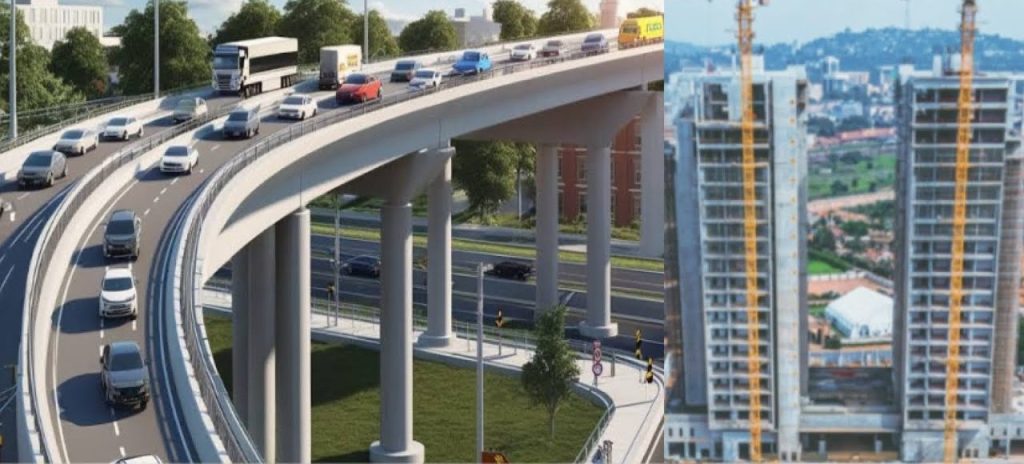
Discover the Top Development Projects Transforming Uganda’s Infrastructure in 2025
Uganda’s construction industry is entering a new growth phase as the government launches multiple large-scale projects in 2025. From roads and bridges to housing and energy, these infrastructure developments are expected to create jobs, attract investment, and accelerate national growth under the Vision 2040 framework.
1. Major Road and Bridge Projects
The Uganda National Roads Authority (UNRA) has announced an ambitious plan to construct and upgrade more than 1,200 kilometers of national roads. Key projects include:
- Kampala–Jinja Expressway (PPP model)
- Hoima–Kagadi–Kyenjojo Road expansion
- Masaka–Mbarara Road rehabilitation
- New bridges over River Katonga and River Kafu
These developments aim to improve regional connectivity, reduce transport costs, and enhance trade routes across East Africa.
2. Energy and Power Infrastructure
The government, in collaboration with partners like the African Development Bank (AfDB) and World Bank, is investing heavily in power generation and distribution.
Key projects for 2025 include:
- Final works on the Karuma Hydropower Project
- Rural electrification in Northern and Eastern Uganda
- Solar and mini-grid installations for off-grid communities
These initiatives will expand energy access and support Uganda’s industrialization agenda.
3. Affordable Housing and Urban Development
To meet the growing urban housing demand, the Ministry of Lands, Housing, and Urban Development has rolled out new projects under public-private partnerships (PPPs).
Highlights include:
- Satellite city housing around Kampala
- Municipal market modernization
- Slum upgrading projects with UN-Habitat support
These efforts are set to improve urban living standards while promoting sustainable construction practices.
4. Industrial and Water Infrastructure
The Uganda Investment Authority (UIA) is expanding industrial parks in Mbale, Soroti, and Gulu to encourage manufacturing and investment.
Additionally, the Ministry of Water and Environment has approved new urban water supply and sanitation projects in Lira, Masindi, and Mbarara — ensuring access to clean water for thousands of residents.
5. Opportunities for Local Contractors
These projects present huge opportunities for local construction companies such as Smeaton Constructions. Firms can participate through open bidding, joint ventures, or subcontracting.
By focusing on quality delivery, sustainability, and compliance with government standards, contractors can position themselves for success in 2025’s booming infrastructure landscape.
Conclusion
2025 marks a turning point for Uganda’s infrastructure development. With strong government commitment, international funding, and private-sector involvement, the country is poised for sustained growth.
At Smeaton Constructions, we are proud to be part of this journey — building a stronger, smarter, and more connected Uganda.
